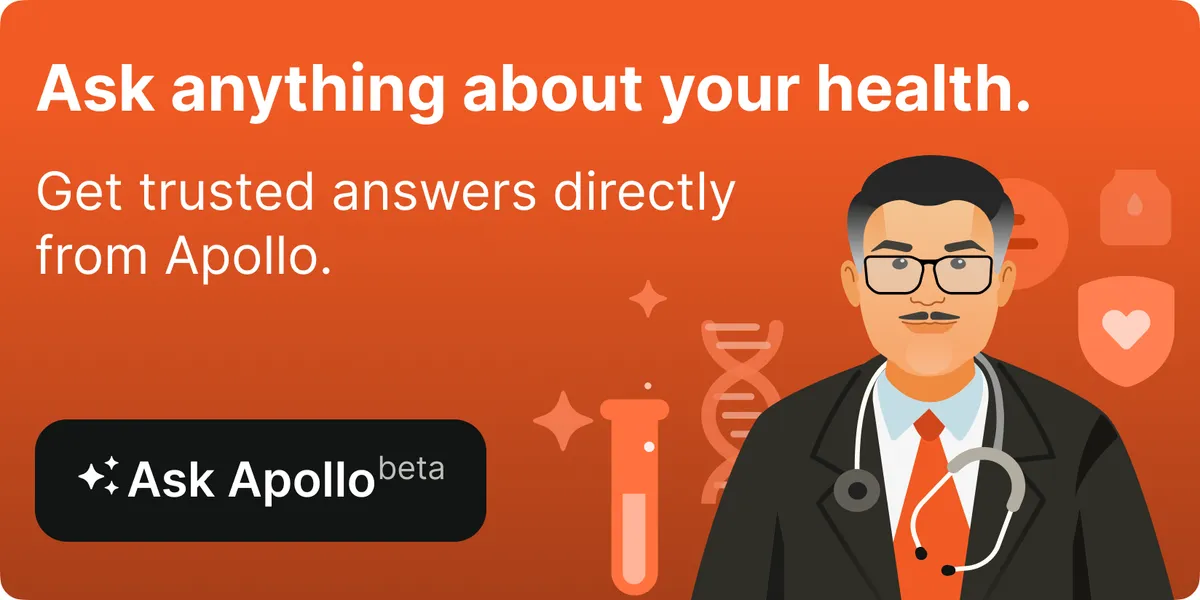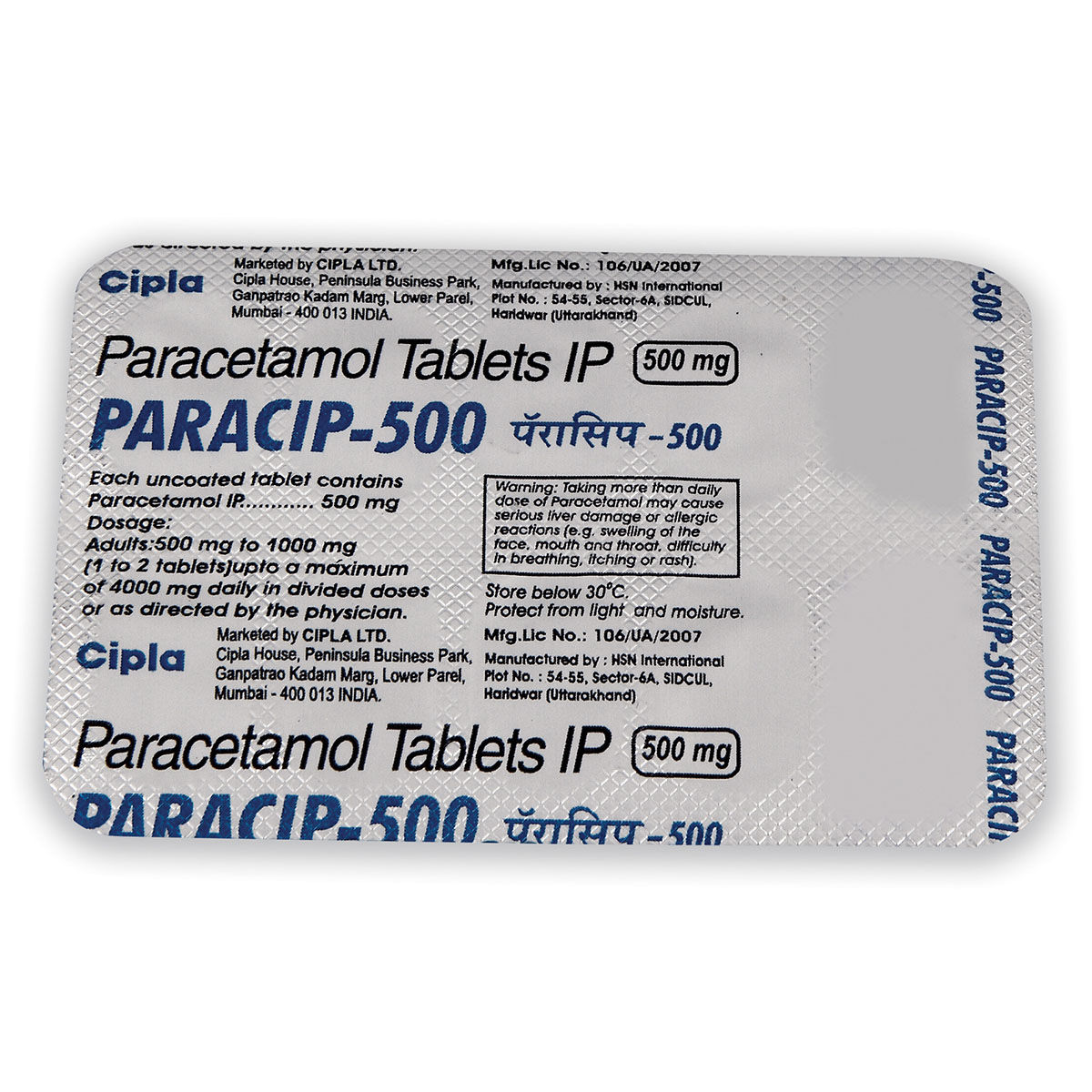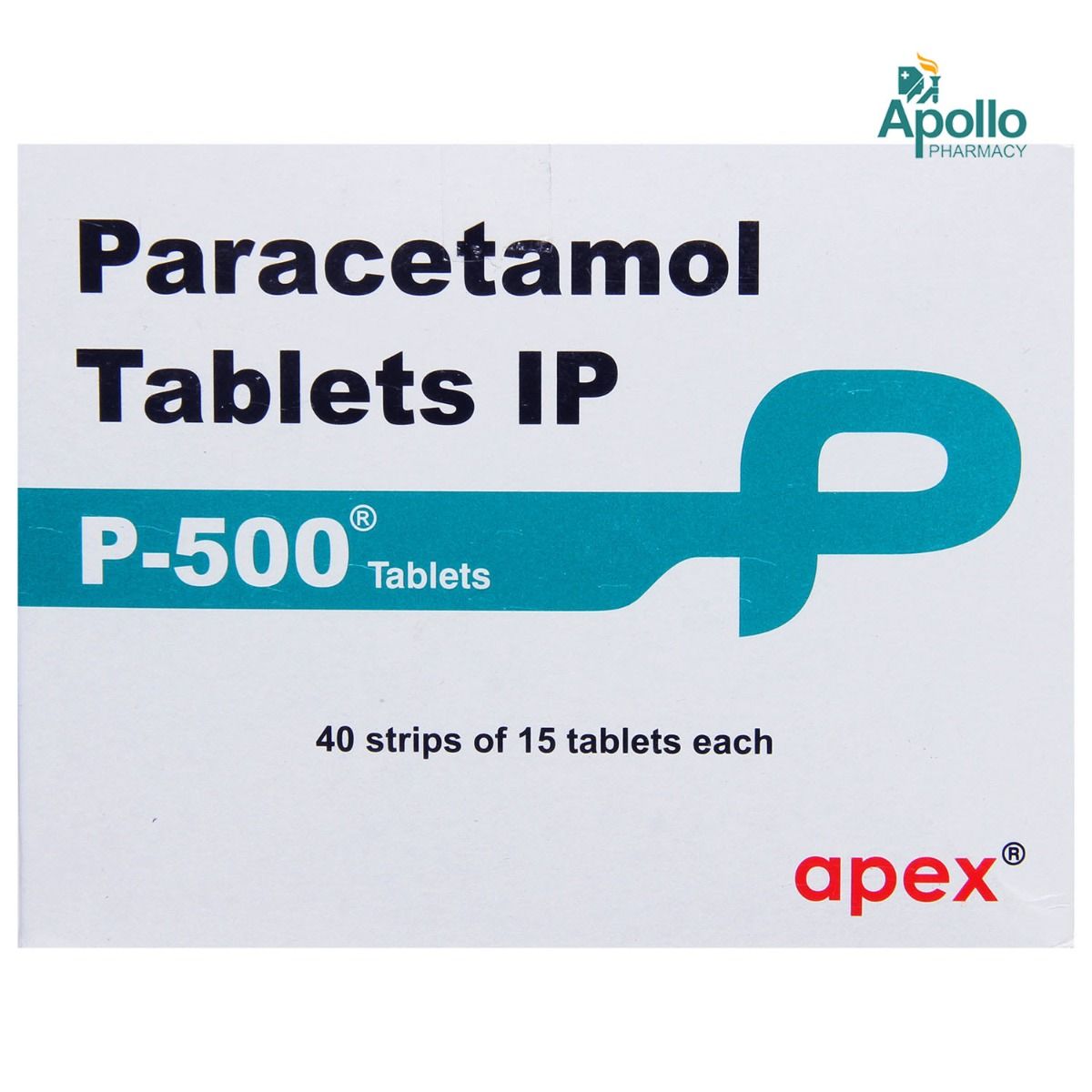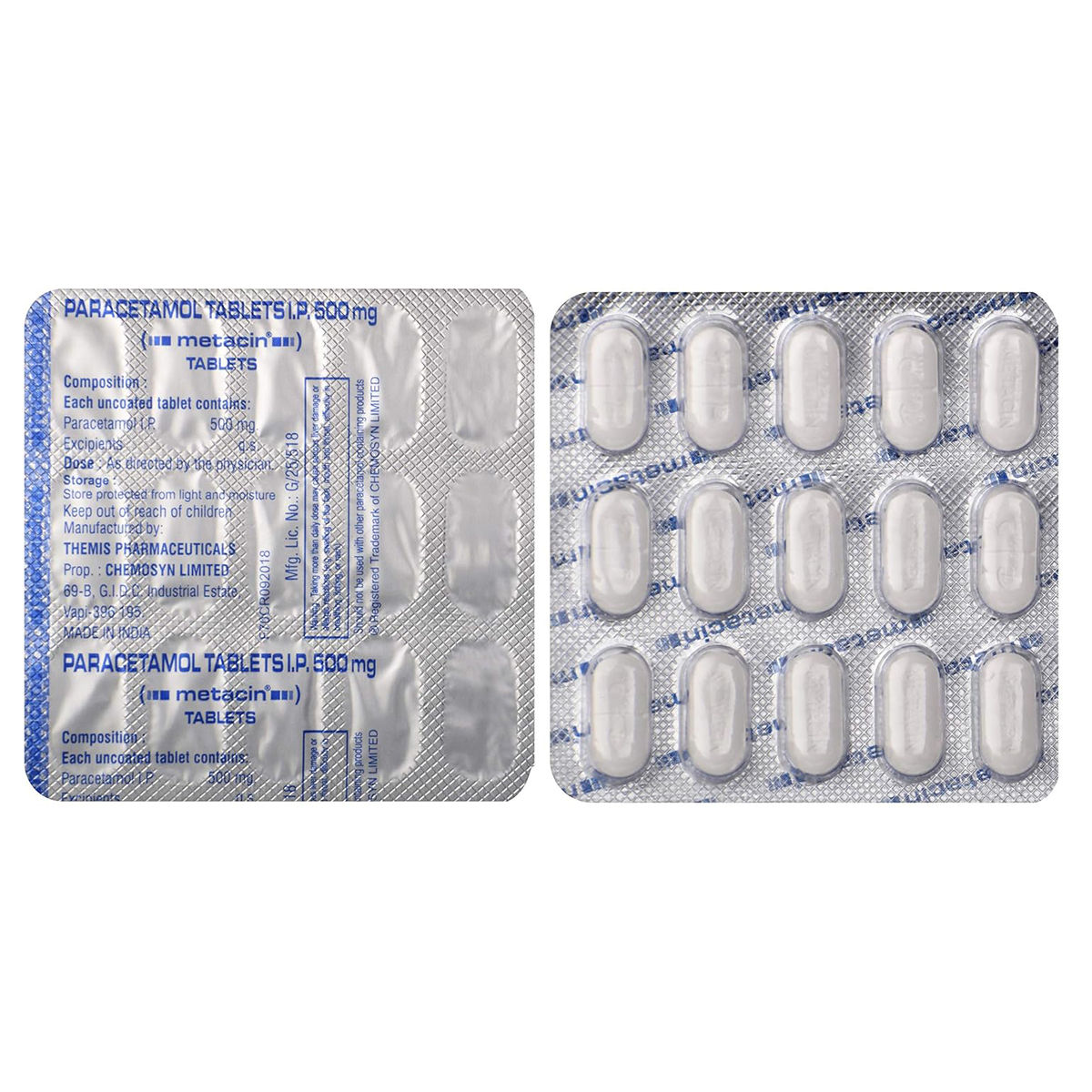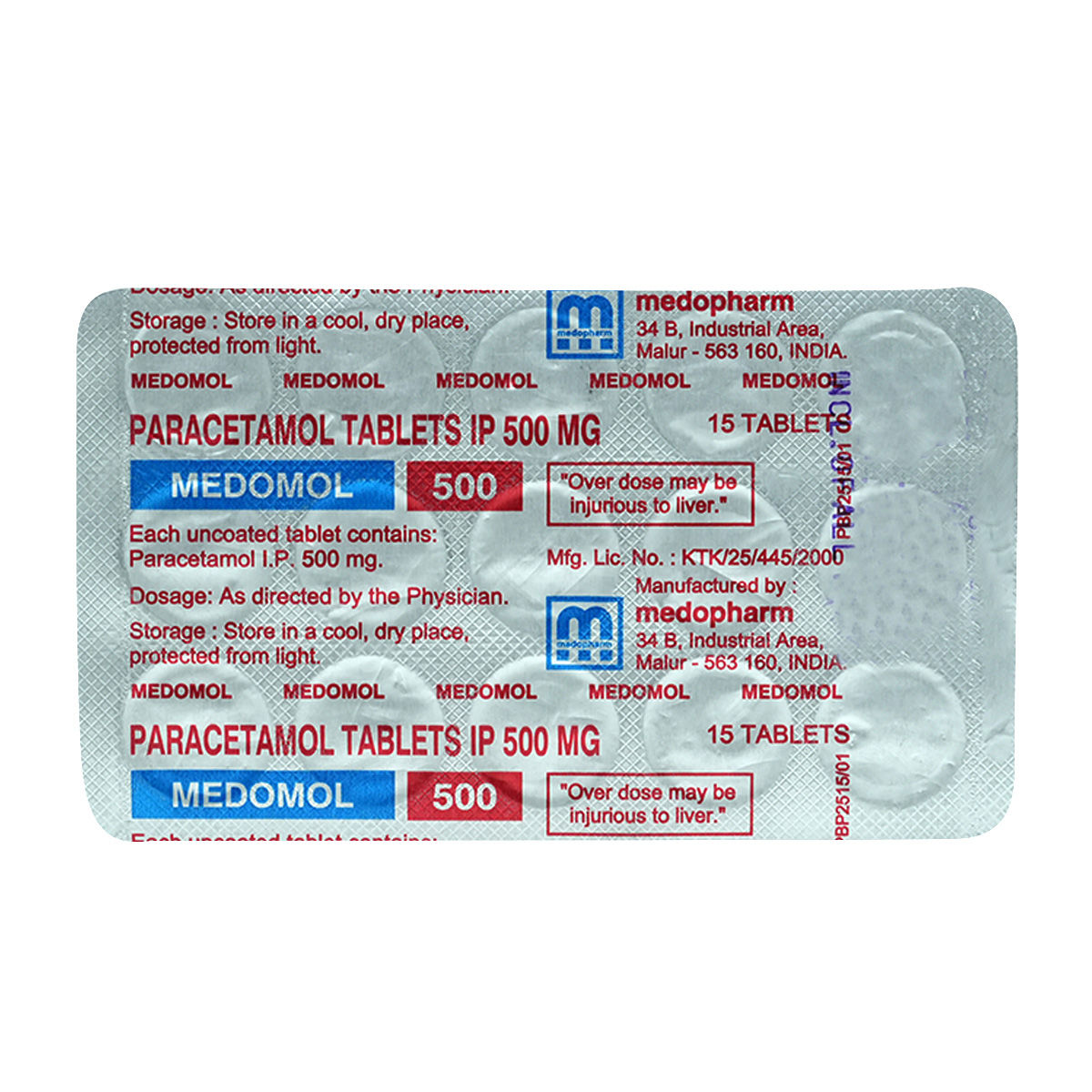Paracetamol 500 mg Tablet 1000's

₹544.14*
MRP ₹604.6
10% off
₹513.91*
MRP ₹604.6
15% CB
₹90.69 cashback(15%)
Free Delivery
With Circle membership
(Inclusive of all Taxes)
This offer price is valid on orders above ₹800. Apply coupon PHARMA10/PHARMA18 (excluding restricted items)
Paracetamol belongs to the class of analgesics (pain killers) and antipyretics (fever-reducing agents) used to treat mild to moderate pain and fever in adults and children. Paracetamol inhibits the chemical messengers in the brain that alert your body to pain. It also lowers high temperatures by influencing chemical messengers in a brain region that regulates body temperature.
Know Your Delivery Time
Provide Delivery Location
 Prescription drug
Prescription drugWhats That

Secure Payment

India's Most Trusted Pharmacy

Genuine Products
Composition :
Manufacturer/Marketer :
Consume Type :
Return Policy :
Expires on or after :
NPPA :
About Paracetamol 500 mg Tablet
Paracetamol belongs to the class of analgesics (pain killers) and antipyretics (fever-reducing agents) used to treat mild to moderate pain and fever in adults and children.
Use as directed by the doctor. Your doctor prescribes this medicine based on your medical condition. Paracetamol rarely causes side effects if you take it at the right dosage. Talk to your pharmacist or doctor if you're worried about a side effect or notice anything unusual.
Paracetamol inhibits the chemical messengers in the brain that alert your body to pain. It also lowers high temperatures by influencing chemical messengers in a brain region that regulates body temperature.
Before using paracetamol, inform your doctor about your (or the user's) medical history and other medications currently taking to rule out any potential negative effects. Only use paracetamol in children if a doctor has recommended it. If you are pregnant or breastfeeding, do not use paracetamol unless your doctor has suggested it. It comes as tablets, capsules, syrup, injections, suppositories, patches, etc.
Uses of Paracetamol 500 mg Tablet
Directions for Use
Medicinal Benefits
-
How Paracetamol 500 mg Tablet Works
- Inform your doctor about the nausea and discuss possible alternatives to the medication or adjustments to the dosage.
- Divide your daily food intake into smaller, more frequent meals to reduce nausea.
- Opt for bland, easily digestible foods like crackers, toast, plain rice, bananas, and applesauce.
- Avoid certain foods that can trigger nausea, such as fatty, greasy, spicy, and smelly foods.
- Drink plenty of fluids, such as water, clear broth, or electrolyte-rich beverages like coconut water or sports drinks.
- Use ginger (tea, ale, or candies) to help relieve nausea.
- Get adequate rest and also avoid strenuous activities that can worsen nausea.
- Talk to your doctor about taking anti-nausea medication if your nausea is severe.
- Record when your nausea occurs, what triggers it, and what provides relief to help you identify patterns and manage your symptoms more effectively.
- Preventing Vomiting (Before it Happens)
- Take medication exactly as prescribed by your doctor. This can help minimize side effects, including vomiting.
- Having a small meal before taking your medication can help reduce nausea and vomiting.
- Talk to your doctor about taking anti-nausea medication along with your prescribed medication.
- Managing Vomiting (If it Happens)
- Try taking ginger in the form of tea, ale, or candy to help alleviate nausea and vomiting.
- What to Do if Vomiting Persists
- Consult your doctor if vomiting continues or worsens, consult the doctor for guidance on adjusting your medication or additional treatment.
- Consume more fruits, vegetables, and cruciferous foods like cabbage, kale, and broccoli.
- Reduced alcohol intake can enhance liver enzyme function.
- Oxidative stress can be managed by eating foods rich in antioxidants, such as vitamins C and E.
- Liver function tests regularly can help manage increased levels of AST.
- Drink water or other clear fluids.
- To prevent worsening of pain, limit intake of tea, coffee, or alcohol.
- Include bland foods like rice, toast, crackers, and rice in your diet.
- Avoid lying down immediately after eating as it may cause indigestion or heartburn.
- Avoid acidic and spicy food as it may cause indigestion.
- Include iron-rich foods like dark leafy vegetables, lean red meat, legumes and fish in your diet.
- Consume vitamin C-rich foods as they aid iron absorption.
- Limit tea, cocoa, and coffee as these can slow iron absorption.
- Exercise regularly; however, do not overdo it.
- Rash caused by allergies is due to irritants or allergens. Therefore, avoid contact with such irritants.
- Consult your doctor for proper medication and apply an anti-itch medication. Follow the schedule and use the medication whenever needed.
- Protect your skin from extreme heat and try to apply wet compresses.
- Soak in the cool bath, which gives a soothing impact to the affected area.
- Tell your doctor immediately if you experience shortness of breath after taking medication.
- Your doctor may adjust the medication regimen or dosage or give alternative medical procedures to minimize the symptoms of shortness of breath.
- Monitor your oxygen levels and breathing rate regularly to track changes and potential side effects.
- For controlling stress and anxiety, try relaxation techniques like deep breathing exercises, meditation, or yoga.
- Make lifestyle changes, such as quitting smoking, exercising regularly, and maintaining a healthy weight.
- Seek emergency medical attention if you experience severe shortness of breath, chest pain, or difficulty speaking.
- Follow up regularly with your doctor to monitor progress, adjust treatment plans, and address any concerns or questions.
What if I have taken an overdose of Paracetamol 500 mg Tablet
Drug Warnings
-
Drug-Drug Interactions
Drug-Drug Interactions
Login/Sign Up
Co-administration of ketamine and Paracetamol 500 mg Tablet may decrease the effectiveness of Ketamine which could result in a higher blood level.
How to manage the interaction:
Although taking Ketamine and Paracetamol 500 mg Tablet together can evidently cause an interaction, it can be taken if a doctor has suggested it. If you're feeling very sleepy or having trouble breathing, it's important to contact your doctor right away. Do not stop using any medications without a doctor's advice.
Co-administration of Paracetamol 500 mg Tablet and Valdecoxib may increase the risk or severity of adverse effects.
How to manage the interaction:
Although there is a possible interaction between Paracetamol 500 mg Tablet and Valdecoxib, you can take these medicines together if prescribed by a doctor. However, if the side effects worsen, please consult a doctor.
Co-administration of Teriflunomide with Paracetamol 500 mg Tablet may increase the risk or severity of Liver problems.
How to manage the interaction:
Taking Paracetamol 500 mg Tablet with Teriflunomide together can possibly result in an interaction, but it can be taken if a doctor has advised it. Do not discontinue any medications without consulting a doctor.
Co-administration of Paracetamol 500 mg Tablet may decrease the excretion rate of Oxazepam which could result in a higher serum level.
How to manage the interaction:
Although there is a possible interaction between Oxazepam and Paracetamol 500 mg Tablet, you can take these medicines together if prescribed by a doctor. Do not stop using any medications without a doctor's advice.
Co-administration of Mipomersen with Paracetamol 500 mg Tablet may increase the risk or severity of liver injury.
How to manage the interaction:
There may be a possibility of interaction between Paracetamol 500 mg Tablet and Mipomersen, but it can be taken if prescribed by a doctor. Do not stop using any medications without talking to a doctor.
Co-administration of Paracetamol 500 mg Tablet and Ketoconazole may increase the risk of liver injury.
How to manage the interaction:
Although there is a possible interaction between Paracetamol 500 mg Tablet and Ketoconazole, you can take these medicines together if prescribed by a doctor. However, if you have joint pain or swelling, fever, chills, unusual bleeding or bruising, skin rash, itching, over-tiredness, nausea, vomiting, loss of appetite, stomach pain, dark-colored urine, light-colored stools, and/or yellowing of the skin or eyes, contact a doctor immediately as these may be signs and symptoms of liver damage. Do not discontinue the medication without consulting a doctor.
Co-administration of Paracetamol 500 mg Tablet and Leflunomide may increase the risk of liver problems.
How to manage the interaction:
Although there is a possible interaction between Paracetamol 500 mg Tablet and Leflunomide, they can be taken together if prescribed by a doctor. However, if you experience fever, chills, joint pain or swelling, unusual bleeding or bruising, skin rash, itching, less desire to eat, fatigue, nausea, vomiting, abdominal pain, or yellowing of the skin or eyes, contact a doctor immediately. Do not discontinue any medications without consulting a doctor.
Co-administration of Lomitapide and Paracetamol 500 mg Tablet may increase the risk of severity of liver injury.
How to manage the interaction:
Although there is a possible interaction between Paracetamol 500 mg Tablet and Lomitapide, you can take these medicines together if prescribed by a doctor. Do not stop using any medications without a doctor's advice.
Drug-Food Interactions
Drug-Food Interactions
Login/Sign Up
Diet & Lifestyle Advise
-
Habit Forming
Therapeutic Class
Product Substitutes
Alcohol
Not applicable
-
Pregnancy
Not applicable
-
Breast Feeding
Not applicable
-
Driving
Not applicable
-
Liver
Not applicable
-
Kidney
Not applicable
-
Children
Safe if prescribed
-

Have a query?
FAQs
-
Country of origin
Manufacturer/Marketer address
Disclaimer
Author Details
We provide you with authentic, trustworthy and relevant information
Reference
Buy best C.n.s Drugs products by
ANTI CONVULSANTS
NSAID'S
ANALGESICS & ANTIPYRETICS
ANTI DEPRESSANTS
MUSCLE RELAXANT
NARCOTICS & PSYCHOTROPIC AGENTS
ANXIOLYTICS & SEDATIVES
CEREBRAL ACTIVATORS
ANTI VERTIGO
ANTI EMETICS
ANTI MIGRAINE
ANTI PARKINSON'S DRUGS
ANTIRHEUMOTOID DRUGS
NEUROMUSCULAR DRUGS
OTHER C.N.S DRUGS
ARTHRITIS
GASTRITIS, REFLUX & ULCERS
TOPICAL NSAID'S
ANTI CONVULSANTS
NSAID'S
ANALGESICS & ANTIPYRETICS
ANTI DEPRESSANTS
MUSCLE RELAXANT
NARCOTICS & PSYCHOTROPIC AGENTS
ANTI ANXIETY
TOPICAL NSAID'S
CEREBRAL ACTIVATORS
ANTI VERTIGO
ANTI EMETICS
ANTI MIGRAINE
SEDATIVES
ANTI PARKINSON'S DRUGS
NEUROMUSCULAR DRUGS
OTHER C.N.S DRUGS
ANTIRHEUMATOID DRUGS
GASTRITIS, REFLUX & ULCERS
Intas Pharmaceuticals Ltd
Sun Pharmaceutical Industries Ltd
Torrent Pharmaceuticals Ltd
Alkem Laboratories Ltd
Abbott India Ltd
Cipla Ltd
Alteus Biogenics Pvt Ltd
Micro Labs Ltd
Lupin Ltd
Ipca Laboratories Ltd
D D Pharmaceuticals Pvt Ltd
Tripada Healthcare Pvt Ltd
Mankind Pharma Pvt Ltd
Arinna Lifesciences Ltd
Linux Laboratories Pvt Ltd
Icon Life Sciences
East West Pharma India Pvt Ltd
La Renon Healthcare Pvt Ltd
Cnx Health Care Pvt Ltd
Talent India Pvt Ltd
Eris Life Sciences Ltd
Leeford Healthcare Ltd
Tas Med India Pvt Ltd
Zydus Healthcare Ltd
Emcure Pharmaceuticals Ltd
Macleods Pharmaceuticals Ltd
Dr Reddy's Laboratories Ltd
Aristo Pharmaceuticals Pvt Ltd
Consern Pharma Ltd
Sigmund Promedica
Troikaa Pharmaceuticals Ltd
Zydus Cadila
Ardent Life Sciences Pvt Ltd
Shine Pharmaceuticals Ltd
Wockhardt Ltd
Crescent Formulations Pvt Ltd
Theo Pharma Pvt Ltd
Matias Healthcare Pvt Ltd
Propel Healthcare
Ikon Pharmaceuticals Pvt Ltd
Jagsam Pharma
Morepen Laboratories Ltd
Reliance Formulation Pvt Ltd
Ajanta Pharma Ltd
Neon Laboratories Ltd
Capital Pharma
Msn Laboratories Pvt Ltd
Akumentis Healthcare Ltd
Matteo Health Care Pvt Ltd
Med Manor Organics Pvt Ltd
Pulse Pharmaceuticals
Elder Pharmaceuticals Ltd
Sanofi India Ltd
Hetero Healthcare Pvt Ltd
Mesmer Pharmaceuticals
Solvate Laboratories Pvt Ltd
Lyf Healthcare
Cyrus Remedies Pvt Ltd
Medishri Healthcare Pvt Ltd
Novartis India Ltd
Crescent Therapeutics Ltd
Mova Pharmaceutical Pvt Ltd
Psyco Remedies Ltd
Alniche Life Sciences Pvt Ltd
Tripada Lifecare Pvt Ltd
Cadila Healthcare Ltd
Glenmark Pharmaceuticals Ltd
Hbc Life Sciences Pvt Ltd
Solis Pharmaceuticals
Alembic Pharmaceuticals Ltd
Brainwave Healthcare Pvt Ltd
Lifecare Neuro Products Ltd
Sanix Formulation Pvt Ltd
Infivis Life Care
Talin Remedies Pvt Ltd
Crescent Pharmaceuticals
Primus Remedies Pvt Ltd
Gagnant Healthcare Pvt Ltd
Kivi Labs Ltd
Medopharm Pvt Ltd
Wallace Pharmaceuticals Pvt Ltd
Blue Cross Laboratories Pvt Ltd
Cadila Pharmaceuticals Ltd
Corona Remedies Pvt Ltd
Jenburkt Pharmaceuticals Ltd
Maneesh Pharmaceuticals Ltd
Quince Lifesciences Pvt Ltd
Trion Pharma India Llp
USV Pvt Ltd
Zuventus Healthcare Ltd
A N Pharmacia Laboratories Pvt Ltd
Ozone Pharmaceuticals Ltd
Pfizer Ltd
Lia Life Sciences Pvt Ltd
Lincoln Pharmaceuticals Ltd
Prevego Healthcare & Research Pvt Ltd
Aareen Healthcare Pvt Ltd
Dycine Pharmaceuticals
Gladstone Pharma India Pvt Ltd
Mano Pharma
Medley Pharmaceuticals Ltd
RPG Life Sciences Ltd
Vasu Organics Pvt Ltd
Apex Laboratories Pvt Ltd
FDC Ltd
Galaxus Pharmaceuticals
Lyceum Life Sciences Pvt Ltd
Arbour Biotec Pvt Ltd
Glarizonto Pharma Pvt Ltd
Knoll Healthcare Pvt Ltd
Overseas Health Care Pvt Ltd
Strides Shasun Ltd
Unimarck Healthcare Pvt Ltd
Wings Pharmacuticals Pvt Ltd
Comed Chemicals Ltd
Divine Savior Pvt Ltd
Ikon Pharmachem
Kiosence Health Care Pvt Ltd
Systopic Laboratories Pvt Ltd
Unichem International
Walnut Life Sciences Pvt Ltd
Arches Pharmaceuticals
Centaur Pharmaceuticals Pvt Ltd
Gentech Healthcare Pvt Ltd
GlaxoSmithKline Pharmaceuticals Ltd
Health N U Therapeutics Pvt Ltd
Kuresys Labs Pvt Ltd
LA Pharma
Nicholas Piramal India Ltd
Startos Healthcare Pvt Ltd
Suraksha Pharma Pvt Ltd
Unison Pharmaceuticals Pvt Ltd
Biochem Pharmaceutical Industries Ltd
Avis Lifecare Pvt Ltd
Geno Pharmaceuticals Pvt Ltd
Lakarez Pharmaceuticals Pvt Ltd
Serotonin Pharmaceuticals Llp
Stature Life Sciences Pvt Ltd
Hansh Pharmaceuticals
Madbris Lifesciences Pvt Ltd
Megma Healthcare Pvt Ltd
Sbs Biotech
Septalyst Lifesciences Pvt Ltd
Starus Pharmaceuticals
Indoco Remedies Ltd
Myk Pharmaceuticals Ltd
Olcare Laboratories Pvt Ltd
Pristine Pearl Pharma Pvt Ltd
Treatsure Pharma
Anglo French Drugs & Industries Ltd
Chemo Healthcare Pvt Ltd
J B Chemicals & Pharmaceuticals Ltd
Ordain Health Care Global Pvt Ltd
Psychocare Health Pvt Ltd
Sparsh Remedies Pvt Ltd
Auspharma Pvt Ltd
Biozen Health Products Pvt Ltd
Icarus Health Care Pvt Ltd
Johnson & Johnson Pvt Ltd
Meyer Organics Pvt Ltd
Snig Pharmaceuticals Pvt Ltd
Viltis Pharma Pvt Ltd
Yuventis Pharmaceuticals
Arvincare
Eysys Pharmaceutical Pvt Ltd
Obsurge Biotech Ltd
Ucb India Pvt Ltd
Biochemix Health Care Pvt Ltd
HEVEREN HEALTHCARE PVT LTD
Laborate Pharmaceuticals India Ltd
Sovyyn Pharmaceuticals
Alna Biotech Pvt Ltd
Eisai Pharmaceuticals India Pvt Ltd
German Remedies Ltd
Helen Pharmaceuticals
Johnlee Pharmaceuticals Pvt Ltd
Knoll Pharmaceuticals Ltd
Orsim Pharma
Themis Pharmaceutical Ltd
Torcium Biotech Pvt Ltd
Unipark Biotech Pvt Ltd
Vrddhi Life Sciences
Wanbury Ltd
Adonis Laboratories Pvt Ltd
Albert David Ltd
Alienist Pharmaceutical Pvt Ltd
Canviko Healthcare Pvt Ltd
Delcure Life Sciences Ltd
Humbing Ethicals
Ishjas Pharma Pvt Ltd
Medgen Drugs And Laboratories Pvt Ltd
Samarth Life Sciences Pvt Ltd
Skn Organics Pvt Ltd
Solas Healthcare
Themis Medicare Ltd
Unichem Laboratories Ltd
Winmark Healthcare Pvt Ltd
Alarta Pharmaceuticals
Alathea Biotec Pvt Ltd
Arrient Healthcare Pvt Ltd
Dhamus Pharma
Glial Life Science Llp
Glorior Biotech Pvt Ltd
Healing Pharma
Intra Life Pvt Ltd
Jagsonpal Pharmaceuticals Ltd
Lloyd Healthcare Pvt Ltd
Pharma Fabrikon
Pills India Lifecare Solutions
Ranbaxy Laboratories Ltd
Regenix Drugs Ltd
Rhine Biogenics Pvt Ltd
Seagull Pharmaceutical Pvt Ltd
Steris Healthcare
Tesla Labs
URENUS PHARMACEUTICALS PVT LTD
Vanprom Lifesciences Pvt Ltd
Walton Health Care Pvt Ltd
Zee Laboratories Ltd
Adivis Pharma Pvt Ltd
An Pharmaceuticals Pvt Ltd
Bion Therapeutics (I) Pvt Ltd
C'Estlavie Pharma
Cognyzon Pharmaceuticals
Dolvis Bio Pharma Pvt Ltd
East India Pharmaceutical Works Ltd
Elbrit Life Sciences Pvt Ltd
Ideal Life Sciences Pvt Ltd
Kepler Healthcare Pvt Ltd
Larion Life Sciences Pvt Ltd
Mitis Biomedics Ltd
OPINOR PHARMACEUTICALS PVT LTD
Pharmed Ltd
Psychotropics India Ltd
Ronyd Healthcare Pvt Ltd
Serum Institute Of India Pvt Ltd
Silver Cross Medisciences Pvt Ltd
Siskan Pharma Pvt Ltd
Unimarck Pharma India Ltd
Zenolia Life Science Pvt Ltd
Anax Life Sciences Pvt Ltd
Arkson Pharmaceuticals
Aurz Pharmaceutical Pvt Ltd
Force India Pharma
Geneaid Pharmaceuticals
Helios Pharmaceuticals
Hetero Drugs Ltd
Lotus Life Sciences
Race Pharmaceuticals Pvt Ltd
Saanso Pharma Pvt Ltd
Saffron Therapeutics Pvt Ltd
Salas Pharmaceuticals
Signova Pharma
Silok Pharmaceuticals
Win Medicare Ltd
Aar Ess Remedies Pvt Ltd
Apellon Biotech
Auxesis Pharmaceuticals Pvt Ltd
Cycus Healthcare Pvt Ltd
Ernst Pharmacia
Hauz Pharma Pvt Ltd
Hymax Healthcare Pvt Ltd
Invision Medi Sciences Pvt Ltd
Kinesis Pharmaceuticals Pvt Ltd
Macway Biotech Pvt Ltd
Maverick Pharma Pvt Ltd
Medsol India Overseas Pvt Ltd
Meglife Pharmaceuticals Pvt Ltd
Mindwin Life Sciences Pvt Ltd
Oxpro Pharma Pvt Ltd
Q Check Pharmaceuticals
Skylane Pharmaceuticals
Stance Biogenics Pvt Ltd
Systemic Healthcare
Uniprixx Laboratories Pvt Ltd
Ventus Pharma
Veritaz Healthcare Ltd
3M India Ltd
DR Johns Lab Pharma Pvt Ltd
Delvin Formulations (P) Ltd
Dr Moni Pharmaceuticals Pvt Ltd
Ficus Remedies
Galpha Laboratories Ltd
Grandcure Healthcare Pvt Ltd
Ivy Healthcare Infrastructure Pvt Ltd
Levin Life Sciences Pvt Ltd
Lividus Pharmaceuticals Pvt Ltd
Mascot Health Series Pvt Ltd
Medtas Healthcare
Meridian Enterprises Pvt Ltd
Midas Health Care
Neurolife Pharmaceuticals Pvt Ltd
Olamic Pharma Pvt Ltd
Peakmed Lifecare Enterprise
SMC HEALTHCARE PVT LTD
Solveig Life Sciences Pvt Ltd
Xemex Life Sciences
Zota Health Care Ltd
Agm Biotech Pvt Ltd
Aspen Pharmaceutical Pvt Ltd








